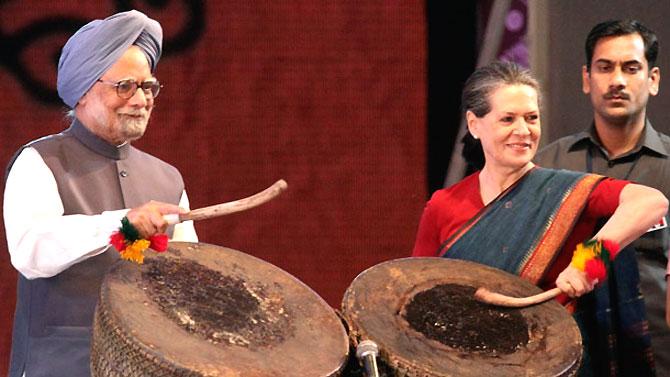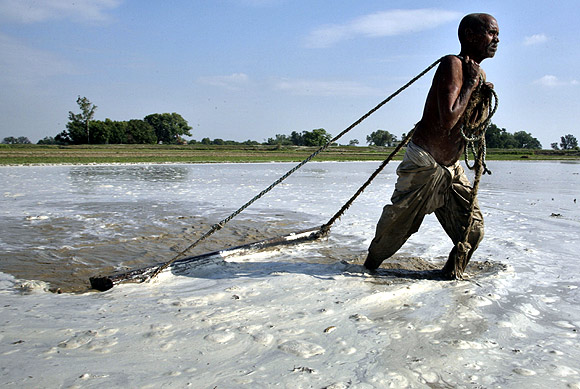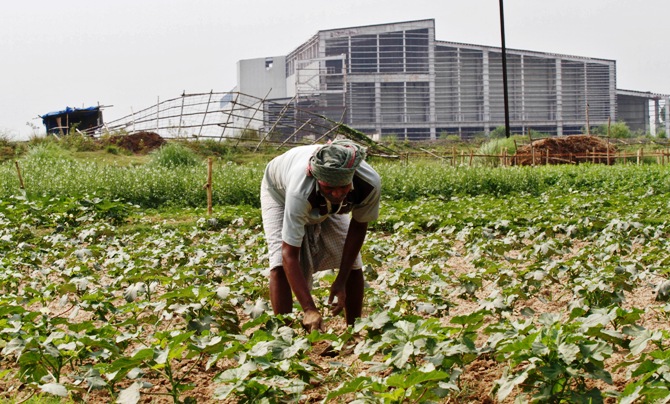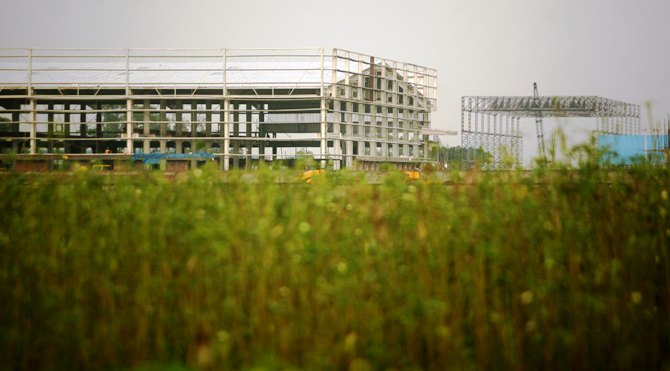Photographs: Reuters T N Ninan
The land acquisition law may be good politics, but politics without grounding in basic economics is the surest guarantee of economic disaster, says T N Ninan.
Critics of Indira Gandhi's Leftist phase (1969-73) have a longish list of the legislation that she left behind as a problematic legacy.
This includes restrictive and rigid labour laws and the nationalisation of major banks.
The first has arguably come in the way of expanding employment in the organised manufacturing sector; the second has culminated today in a state-owned banking system that is near bankruptcy, since it has eaten up much of its capital.
In a similar vein, the country will have occasion to look back and consider which piece of legislation might be the worst legacy of the second Sonia Gandhi-Manmohan Singh government.
…
Which is the UPA govt's worst legacy?
Image: Land prices in India have multiplied four- and five-fold in most parts.Photographs: Reuters
Eventually, it might emerge that the law with the potential to do the most lasting damage is the one on land acquisition - passed, let it be added, with the support of the bulk of the Opposition.
That's not because farmers don't have the right to a proper price for land taken away from them forcibly, but because there is also such a thing as too high a price, and windfall gains.
Bear in mind that land prices in India have multiplied four- and five-fold in most parts of the country in the last decade - in city as well as village.
Significant stretches of rural India now have land prices that are higher than those in any rural area of the United States, and in almost all of Europe barring countries like Holland.
…
Which is the UPA govt's worst legacy?
Image: Land law stipulates that forcibly acquired land must be paid for at two to four times these market prices.Photographs: Reuters
The land law stipulates that forcibly acquired land must be paid for at two to four times these market prices, in addition to other relief and rehabilitation costs.
So the new law will make land acquisition next to impossible, or unaffordably expensive (which becomes the same thing) in most states.
And since development unavoidably means projects that require large bits of contiguous land (railway lines, roads, irrigation canals, power stations), it means that development itself could be slowed down. Whichever government comes into office two months from now must put radical changes in this law at or near the top of its agenda, if the long-term Gandhi-Singh legacy is not to be slow economic growth.
…
Which is the UPA govt's worst legacy?
Image: A farmer works in a field next to the closed Tata Motors Nano car factory in Singur.Photographs: Rupak De Chowdhuri/Reuters
In his lucid study, The Price of Land (Oxford University Press), Sanjoy Chakravorty has gone into these and related issues, even as he has outlined the tragic history of land acquisition in India and why the proposed law (it was a Bill when he wrote the book, and some of its more extreme provisions were ultimately watered down) is not a solution.
The broad point, which remains valid, is that the cost of land as well as relief and rehabilitation in places like Singur would be multiples of what the West Bengal government paid in 2006-07 (Rs 9 lakh per acre).
If placed in an interest-bearing deposit, it would yield many multiples of the income generated by the same land from agriculture.
…
Which is the UPA govt's worst legacy?
Image: The abandoned Tata Nano factory in Singur.Photographs: Jayanta Shaw/Reuters
While this would be a windfall for those losing their land, and an even bigger windfall for non-owners dependent on the land (because of the prescribed relief and rehabilitation), most projects needing large lumps of land not too far from an urban or semi-urban setting would simply become too costly to be viable.
Mr Chakravorty makes the fundamental point that, while the law assumes two players in land acquisition (the buyer and the seller), there is a third stake-holder, that is the public, which would find the costs of everything from power to irrigation and from transport to information technology parks climbing even as those on one side of the triangle get windfall gains.
...
Which is the UPA govt's worst legacy?
Photographs: Reuters
On top of everything else, there is the new bureaucracy and sundry intermediaries that are to be created to supervise the implementation of the new law - potentially a nightmare scenario in its own right.
The law may be good politics, but politics without grounding in basic economics is the surest guarantee of economic disaster.








article